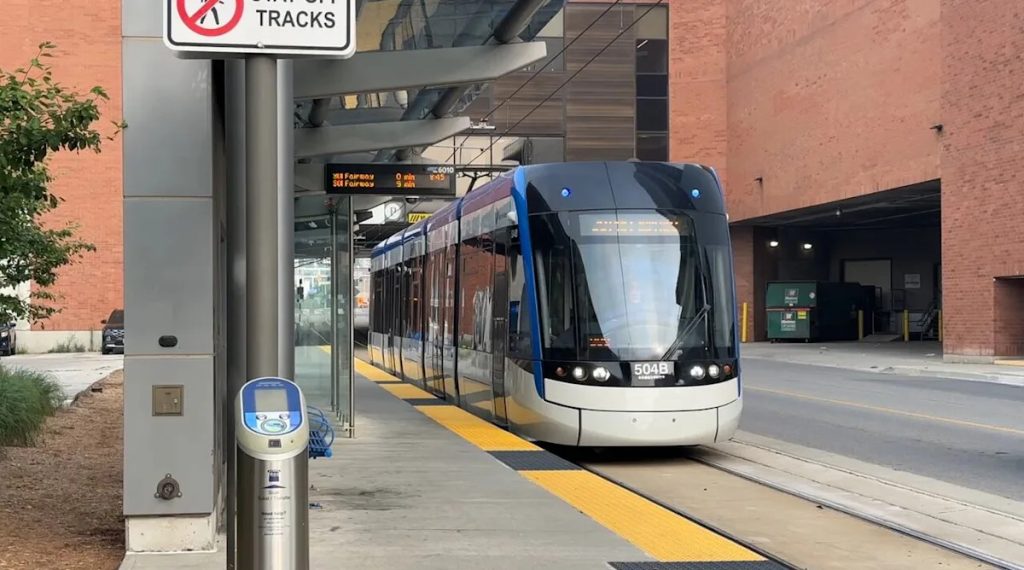Waterloo Region’s LRT Expansion to Cambridge Sparks Debate Over Cost and Preservation
The Region of Waterloo is in the final stages of preparing its business case for phase two of the Ion light rail transit (LRT) project, an extension that will connect Cambridge to the existing LRT line in Kitchener and Waterloo. This ambitious undertaking, while lauded by some as a vital step towards a more integrated and sustainable regional transit system, has sparked a heated debate among Cambridge residents, balancing the perceived benefits of improved connectivity against concerns about the project’s cost and potential impact on the city’s historic downtown core.
Councillor Ross Earnshaw reports a predominantly positive response to the LRT extension, citing enthusiasm for the enhanced transportation options and the anticipated economic benefits it could bring to Cambridge. However, a vocal contingent of residents remains skeptical, expressing reservations about the substantial financial investment required and the potential disruption the construction process could inflict upon the city. Preservationists, in particular, have voiced anxieties about the LRT’s impact on the unique character of Cambridge’s downtown, a district known for its heritage architecture and charming streetscapes. This tension between progress and preservation has become a central theme in the ongoing discussions surrounding the LRT extension.
The projected cost of the project remains a significant point of contention. While supporters argue that the long-term benefits of improved transit infrastructure outweigh the initial financial outlay, opponents question the feasibility of the project given the current economic climate and the potential for cost overruns, a phenomenon that has plagued other large-scale infrastructure projects across the country. They advocate for exploring alternative, less expensive transit solutions that could achieve similar goals without placing such a heavy burden on taxpayers. The debate underscores the complex challenge of balancing the need for modern, efficient transportation with responsible fiscal management.
The proposed route of the LRT through Cambridge’s downtown core has also drawn criticism. Preservationists argue that the introduction of modern infrastructure could detract from the historic charm and architectural integrity of the area. Concerns have been raised regarding the potential impact on heritage buildings, the disruption to pedestrian traffic, and the overall aesthetic integration of the LRT within the existing urban fabric. Proponents counter that careful planning and sensitive design can mitigate these concerns, ensuring the project complements rather than detracts from the city’s heritage. They highlight examples of successful LRT integrations in other historic cities, emphasizing the potential for the project to enhance the downtown area’s vibrancy and accessibility.
The debate extends beyond the immediate impacts of construction and cost, encompassing broader questions about the future of Cambridge and its place within the wider regional context. Supporters envision the LRT as a catalyst for economic growth, attracting new businesses, creating jobs, and boosting tourism. They argue that improved connectivity with Kitchener and Waterloo will make Cambridge a more desirable place to live and work, contributing to the city’s long-term prosperity. Opponents, however, express concerns about the potential for gentrification and displacement, fearing that the influx of new development could erode the city’s existing character and affordability.
As the Region of Waterloo moves closer to a final decision regarding the LRT extension, the debate over its merits and potential consequences continues to unfold. Balancing the desire for improved transit infrastructure with the need to preserve the city’s unique heritage and address the concerns of its residents remains a complex challenge. The ultimate success of the project will hinge on the ability of all stakeholders to engage in constructive dialogue and find solutions that address the multifaceted needs of the community. A thorough and transparent public consultation process will be crucial in ensuring that the final decision reflects the best interests of Cambridge and the wider region.


